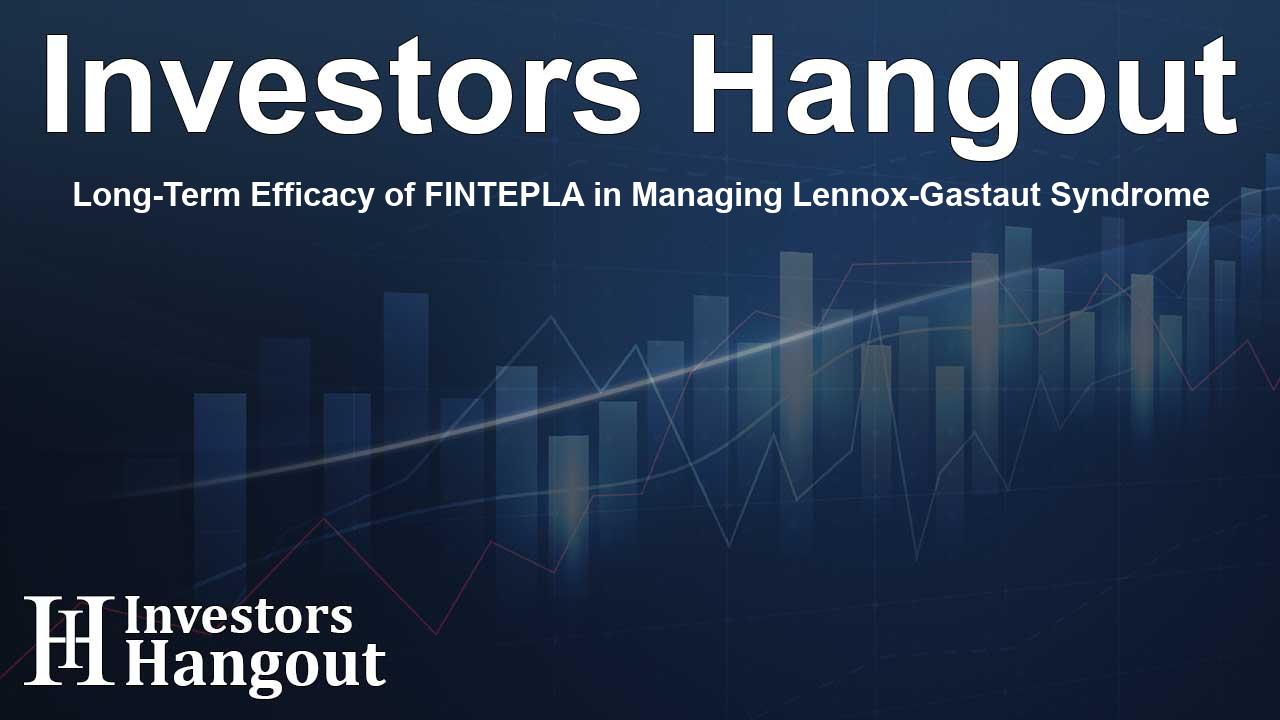Long-Term Efficacy of FINTEPLA in Managing Lennox-Gastaut Syndrome

Long-Term Efficacy of FINTEPLA in Managing Lennox-Gastaut Syndrome
FINTEPLA, known scientifically as fenfluramine, has demonstrated remarkable potential in treating seizures associated with Lennox-Gastaut syndrome (LGS) as confirmed by a significant open-label extension (OLE) study. This study emphasized the drug's beneficial effects, particularly in lowering seizure frequency and enhancing overall quality of life for patients and their caregivers.
FDA Approval and Safety Profile
Approved by the U.S. Food and Drug Administration (FDA) for those aged two years and older, FINTEPLA serves as a treatment option for seizures linked to both Dravet syndrome and LGS. Notably, this recent analysis reported no new safety signals, reinforcing the established safety profile of FINTEPLA from prior research.
Positive Outcomes in Efficacy
The findings from the OLE study reveal that children and adults treated with fenfluramine for LGS experienced a sustained reduction in the frequency of seizures associated with a fall, specifically drop seizures. This outcome was observed from the second month of the OLE until the study's conclusion, showcasing a significant long-term benefit compared to baseline levels. Parents and caregivers noted not only a decrease in seizure occurrences but also enhancements in social interactions, overall health, and quality of life.
Improvements Reported by Caregivers
According to feedback gathered throughout the study duration, parents and caregivers reported meaningful improvements by the end of the OLE period. This included a decrease in their own anxiety levels, indicating how the administration of FINTEPLA has positively influenced family dynamics and mental well-being, alleviating some of the emotional strain associated with managing LGS.
Highlights from the Study
A total of 247 patients, with an average age of 14.3 years, participated in the OLE study. Results highlighted various key endpoints demonstrating the treatment's effectiveness. For instance:
- Common treatment-emergent adverse events (TEAEs) were noted, with decreased appetite, fatigue, and pyrexia being the most reported.
- The significant reduction in seizure frequency associated with a fall was measured at a median percentage change of -31.1%, demonstrating substantial efficacy across different age groups.
- More than half of caregivers and investigators noted improvement in patients on the Clinical Global Impression–Improvement (CGI-I) scale.
- The Quality of Life in Childhood Epilepsy Questionnaire indicated an improvement in mean overall quality of life scores over the treatment period.
While the study's open-label design was a notable limitation, the data nonetheless provides a compelling perspective on fenfluramine's long-term tolerability and efficacy in managing LGS.
Understanding Lennox-Gastaut Syndrome
Lennox-Gastaut syndrome is a serious condition classified as a developmental and epileptic encephalopathy. It is marked by various seizure types, including tonic seizures, and is often accompanied by developmental delays. The implications of LGS extend beyond seizures, impacting cognitive, psychiatric, and physical development.
About FINTEPLA
FINTEPLA has become a crucial option for families dealing with the challenges of LGS. It is vital for healthcare providers to continuously monitor patients for possible side effects, including valvular heart disease and pulmonary arterial hypertension, as part of a broader treatment strategy utilizing echocardiograms before, during, and after treatment.
Frequently Asked Questions
What is FINTEPLA used for?
FINTEPLA is indicated for treating seizures associated with Dravet syndrome and Lennox-Gastaut syndrome in patients aged two years and older.
What were the results of the OLE study?
The OLE study showed significant reductions in seizure frequency and improvements in the overall quality of life for both patients and caregivers.
Are there any safety concerns with FINTEPLA?
Yes, potential side effects include valvular heart disease and pulmonary arterial hypertension, necessitating regular cardiac monitoring during treatment.
How long is the typical treatment duration with FINTEPLA?
During the OLE study, the mean fenfluramine exposure was approximately 364 days, showcasing its use over an extended period for enhanced seizure management.
Who can prescribe FINTEPLA?
Prescribers must be certified to administer FINTEPLA, which involves enrolling in the FINTEPLA REMS program to ensure patient safety and compliance.
About The Author
Contact Dylan Bailey privately here. Or send an email with ATTN: Dylan Bailey as the subject to contact@investorshangout.com.
About Investors Hangout
Investors Hangout is a leading online stock forum for financial discussion and learning, offering a wide range of free tools and resources. It draws in traders of all levels, who exchange market knowledge, investigate trading tactics, and keep an eye on industry developments in real time. Featuring financial articles, stock message boards, quotes, charts, company profiles, and live news updates. Through cooperative learning and a wealth of informational resources, it helps users from novices creating their first portfolios to experts honing their techniques. Join Investors Hangout today: https://investorshangout.com/
The content of this article is based on factual, publicly available information and does not represent legal, financial, or investment advice. Investors Hangout does not offer financial advice, and the author is not a licensed financial advisor. Consult a qualified advisor before making any financial or investment decisions based on this article. This article should not be considered advice to purchase, sell, or hold any securities or other investments. If any of the material provided here is inaccurate, please contact us for corrections.
